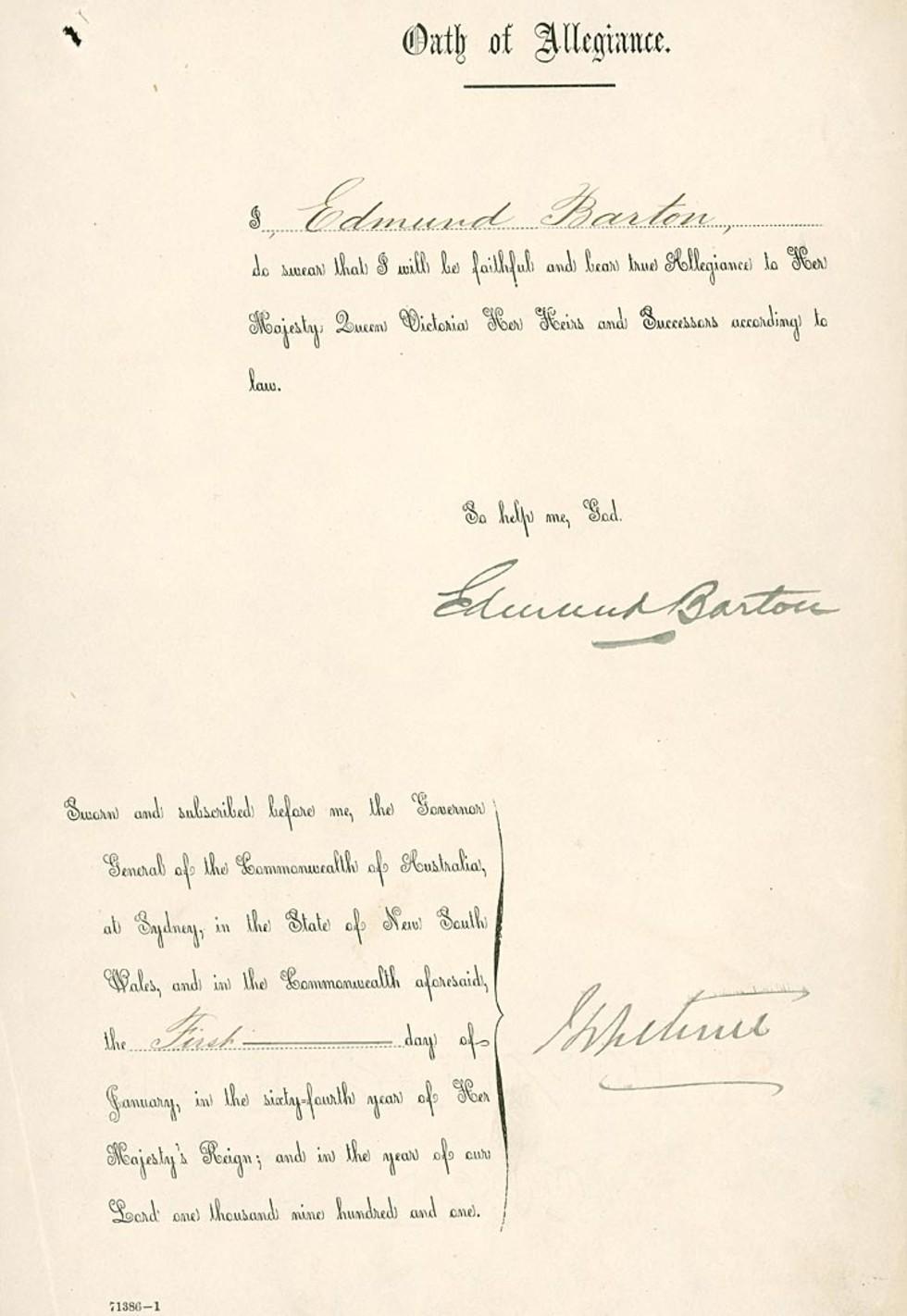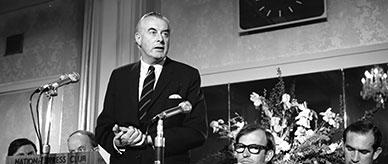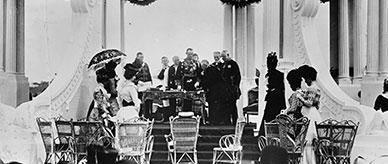


Transcript
[Underlined heading:] Oath of Allegiance.
I, [Handwritten name:] Edmund Barton, do swear that I will be faithful and bear true Allegiance to Her Majesty Queen Victoria Her Heirs and Successors according to law.
So help me, God.
[Handwritten signature:] Edmund Barton
Sworn and subscribed before me, the Governor General of the Commonwealth of Australia, at Sydney, in the State of New South Wales, and in the Commonwealth aforesaid the [handwritten date] First [end handwritten] day of January, in the sixty-fourth year of Her Majesty's Reign; and in the year of our Lord one thousand nine hundred and one.
[Handwritten signature:] J Hopetoun
About this record
This is the oath of allegiance to Queen Victoria and 'Her Heirs and Successors according to law' signed by Edmund Barton as he was sworn in to the first government ministry of the Commonwealth of Australia on 1 January 1901. The Governor-General, Lord Hopetoun, countersigned to witness that the oath had been 'Sworn and subscribed' before him. The simple printed document has Barton's name and the date of signing inserted.
Educational value
- By signing this oath of allegiance, Edmund Barton (1849–1920) completed the process of being sworn in to the first government ministry of the Commonwealth of Australia. Although Barton signed an Executive Councillor's oath and an official oath as Minister for External Affairs in addition to this document, he did not sign any official oath as Prime Minister. There was no such oath because the office of prime minister is not separately designated in Australia's Constitution.
- Barton's swearing-in formed a significant part of the inauguration of the Commonwealth of Australia in Sydney on 1 January 1901. Following a grand procession to Centennial Park, the inauguration ceremonies began with prayers and proclamations followed by the swearing-in of the Governor-General, who in turn swore in Barton, six other ministers of state and three other office-holders or honorary ministers in Australia's first national government.
- In order to be sworn in, Barton needed to satisfy the Governor-General Designate that he was able to form a government until elections could be held for the first federal parliament. Just before Christmas 1900, Lord Hopetoun (1860–1908) had invited Barton to form a government, and on Christmas Day Barton was able to announce that he had secured the agreement of prominent Australian politicians, including three state premiers, to serve in his cabinet.
- The language of the oath makes it clear that the new nation had a constitutional monarch, that it would remain a loyal part of the British Empire and that its leaders would be 'faithful and bear true Allegiance' to the Crown. This form of words was set out in a schedule of the Constitution to be sworn or affirmed by every incoming senator or member of the House of Representatives.
- Barton was the logical choice to be invited to form a government and thus become Australia's first prime minister. He had been a prominent politician in New South Wales and a tireless champion of federation, attending all the conventions and contributing greatly to the drafting the Constitution. By 1897 he had become an acknowledged leader of the federation movement and in 1900 led the Australian colonies' delegation to limit change to the Constitution Bill by the British Parliament.
- In spite of his leadership of the federation movement, Barton very nearly did not receive the opportunity to become prime minister. On 19 December 1900, the Governor-General Designate had invited Sir William Lyne (1844–1913), Premier of New South Wales and an opponent of federation, to form the government. When Barton refused to serve in the ministry and Alfred Deakin (1856–1919) galvanised interstate opposition, Lyne's efforts failed and Hopetoun turned to Barton.
Acknowledgments
Learning resource text © Education Services Australia Limited and the National Archives of Australia 2010.
Related themes
Need help with your research?
Learn how to interpret primary sources, use our collection and more.


